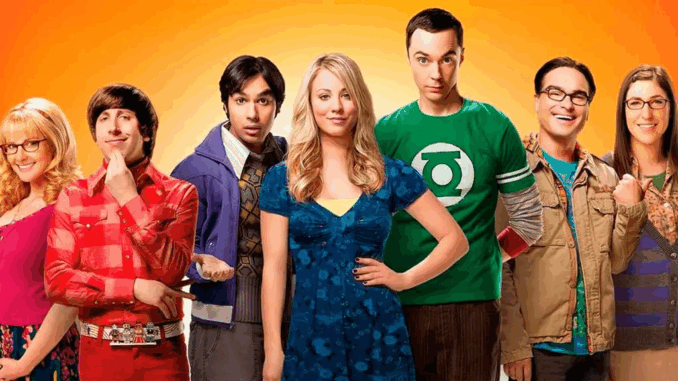
Sheldon Cooper, portrayed by Jim Parsons, is one of television’s most iconic characters. His brilliance in theoretical physics is matched only by his social awkwardness and unique worldview. But one aspect of his character that stood out was his lack of romantic relationships, especially in the early seasons of The Big Bang Theory. This decision was not a mere oversight but a deliberate choice by the show’s creator, Chuck Lorre.
The Vision Behind Sheldon’s Character
A Character Uninterested in Romance
From the outset, Chuck Lorre envisioned Sheldon as a character whose primary passion was science. Lorre stated, “He had no predilection towards one thing or the other. He loved and used every moment of his conscious waking to chase the secrets of the universe.” This intense focus on his work left little room for romantic entanglements.
Avoiding Traditional Romantic Tropes
Lorre was determined to avoid the typical sitcom trope of pairing the quirky genius with a love interest. He believed that introducing a romantic subplot would dilute Sheldon’s unique character and the show’s appeal. By keeping Sheldon single, the show maintained its distinctive narrative and character dynamics.
The Asexual Interpretation of Sheldon
Sheldon as asexual
While the show never explicitly labeled Sheldon as asexual, many fans and critics have interpreted his lack of interest in romance as indicative of asexuality. Lorre supported this interpretation, saying, “Part of what’s wonderful and unique about [Sheldon] is he has chosen not to play in the relationship game either way – heterosexual, homosexual, bisexual, any sexuality.”
Challenging Norms
By not focusing on Sheldon’s romantic life, the show challenged traditional narratives about relationships and sexuality. It presented a character who was content and fulfilled without adhering to societal expectations about love and romance.
The Introduction of Amy Farrah Fowler
A Gradual Development
In Season 3, Sheldon was introduced to Amy Farrah Fowler, portrayed by Mayim Bialik, through a dating website. Initially, Sheldon referred to her as a “girl who is a friend, but is not my girlfriend.” Over time, their relationship developed slowly, staying true to Sheldon’s character and comfort levels.
A Unique Relationship
Sheldon and Amy’s relationship was unlike typical sitcom romances. It was characterized by mutual respect, shared intellectual pursuits, and a gradual progression toward physical intimacy. Their relationship highlighted the importance of emotional connection and understanding in a partnership.
The Evolution of Sheldon’s Character
Personal Growth
Throughout the series, Sheldon underwent significant personal growth. His relationship with Amy played a crucial role in this development, helping him learn about empathy, compromise, and emotional intimacy. However, these changes were gradual and consistent with his character’s journey.
Maintaining Authenticity
Despite his growth, Sheldon remained true to his unique personality. He did not become a conventional romantic lead but instead evolved in a way that was authentic to his character. This balance between growth and authenticity was key to the show’s success.
The Impact on the Show’s Dynamics
Focus on Friendship
By keeping Sheldon single for much of the series, the show emphasized the importance of friendship and intellectual connection. The dynamics between Sheldon, Leonard, Howard, and Raj were central to the narrative, showcasing how deep bonds can form without romantic involvement.
Avoiding Clichés
The decision to delay Sheldon’s romantic involvement allowed the show to avoid predictable romantic clichés. This choice kept the storytelling fresh and engaging, offering viewers a unique perspective on relationships and personal growth.
Fan Reactions and Interpretations
Diverse Perspectives
Fans had varied reactions to Sheldon’s lack of romantic relationships. Some appreciated the show’s departure from traditional romantic plots, while others were curious about Sheldon’s sexuality. The show’s handling of this aspect of Sheldon’s character sparked discussions and interpretations among viewers.
Cultural Impact
Sheldon’s unique approach to relationships resonated with many viewers, particularly those who felt underrepresented in mainstream media. The character’s journey offered a narrative that validated different experiences and perspectives on love and relationships.
Conclusion: A Bold Creative Choice
Chuck Lorre’s decision to keep Sheldon Cooper single for much of The Big Bang Theory was a bold and intentional creative choice. It allowed the show to explore themes of personal growth, friendship, and individuality without relying on traditional romantic storylines. This approach not only set Sheldon apart from other characters but also contributed to the show’s lasting appeal and cultural impact.
FAQs
1. Why did Sheldon Cooper not have a romantic partner in the early seasons?
Chuck Lorre, the show’s creator, wanted to maintain Sheldon’s unique character as someone whose primary focus was science, avoiding traditional romantic tropes.
2. Was Sheldon Cooper asexual?
While the show never explicitly labeled Sheldon as asexual, his lack of interest in romance led many to interpret his character as such.
3. How did Sheldon’s relationship with Amy Farrah Fowler develop?
Sheldon and Amy’s relationship developed slowly, with a focus on intellectual connection and mutual respect, staying true to Sheldon’s character.
4. Did Sheldon’s character change over the course of the series?
Yes, Sheldon underwent significant personal growth, particularly through his relationship with Amy, learning about empathy and emotional intimacy while remaining true to his unique personality.
5. How did fans react to Sheldon’s lack of romantic relationships?
Fans had varied reactions, with some appreciating the show’s departure from traditional romantic plots and others curious about Sheldon’s sexuality. The show’s handling of this aspect sparked discussions and interpretations among viewers.
